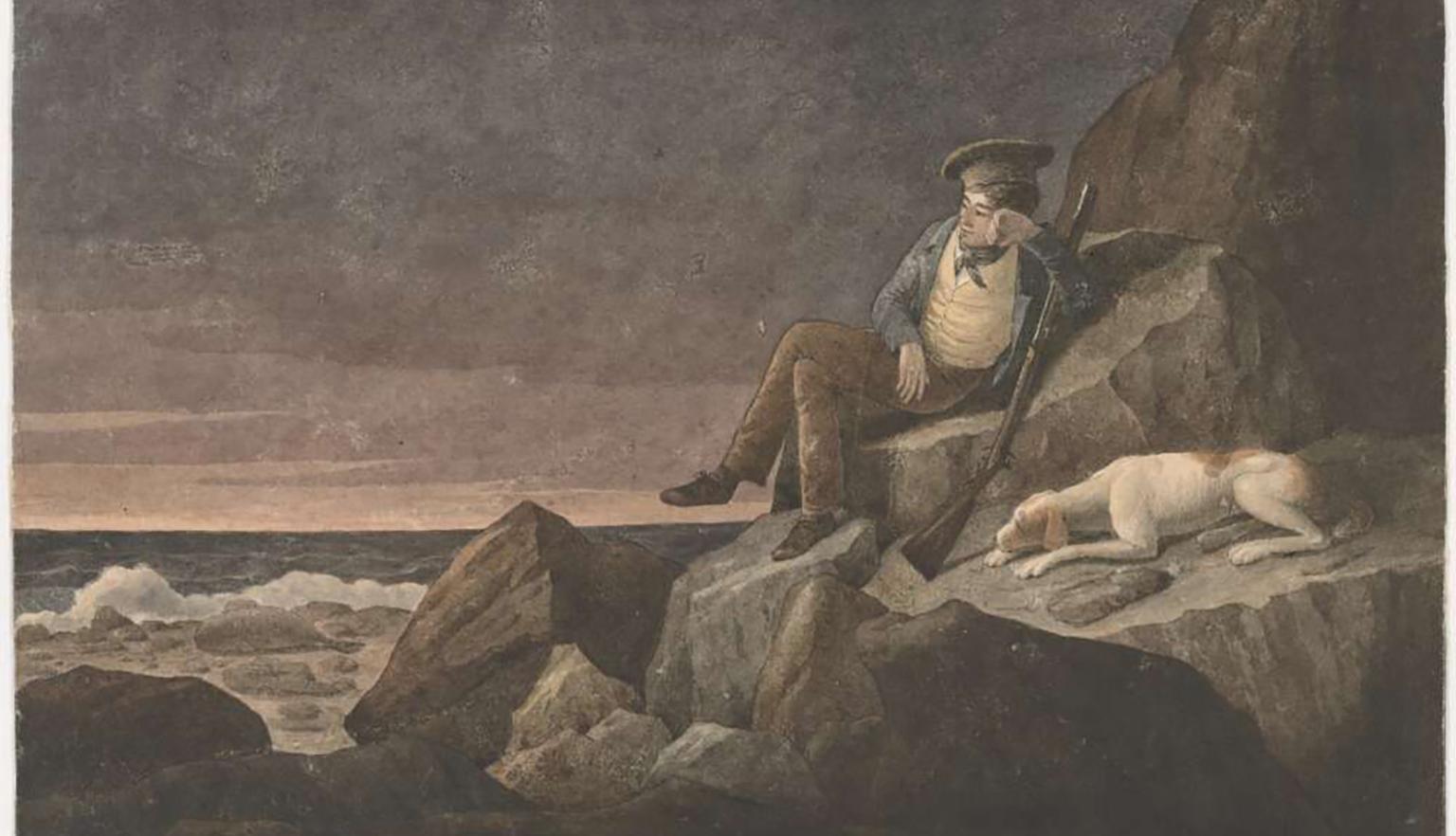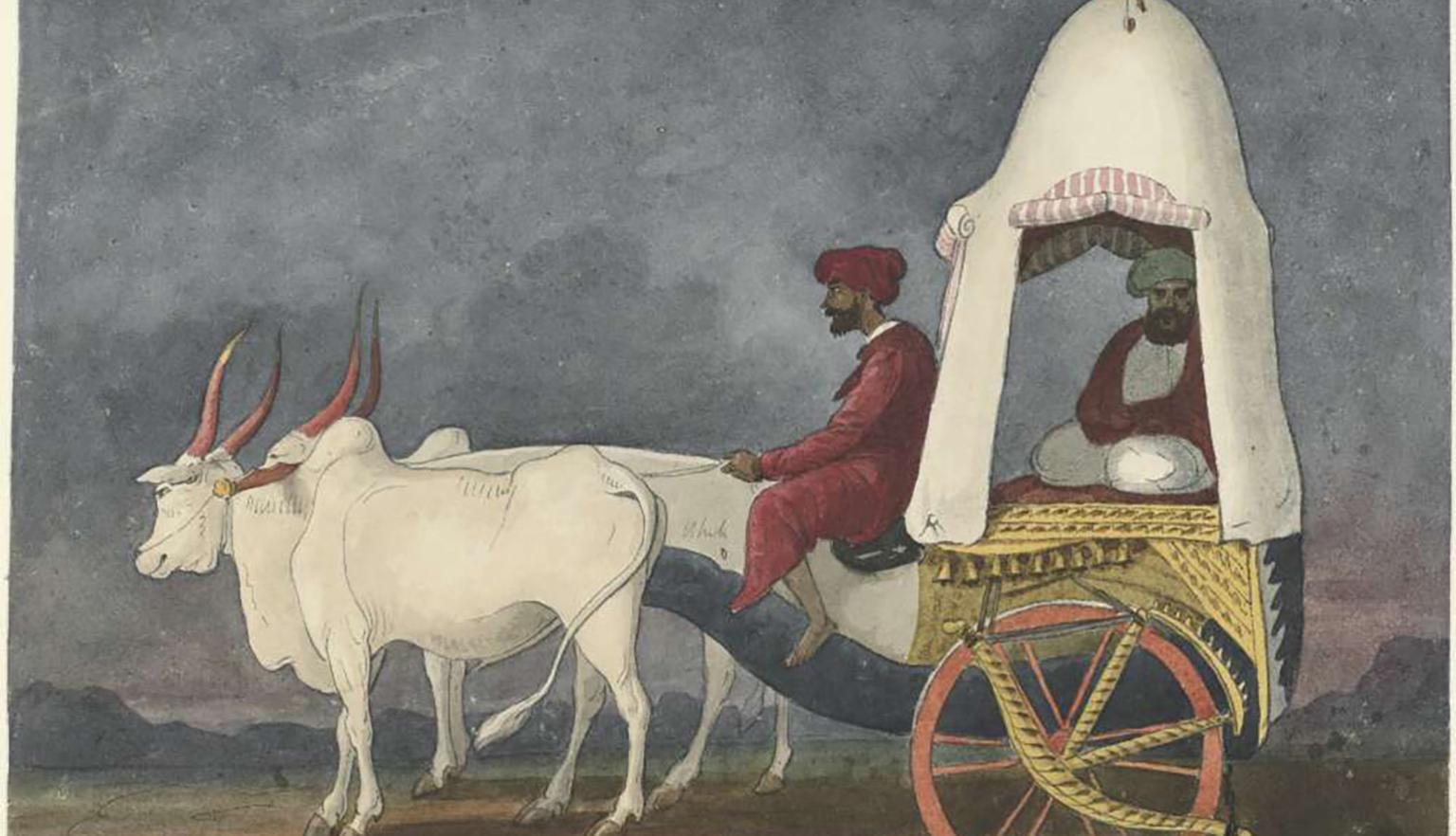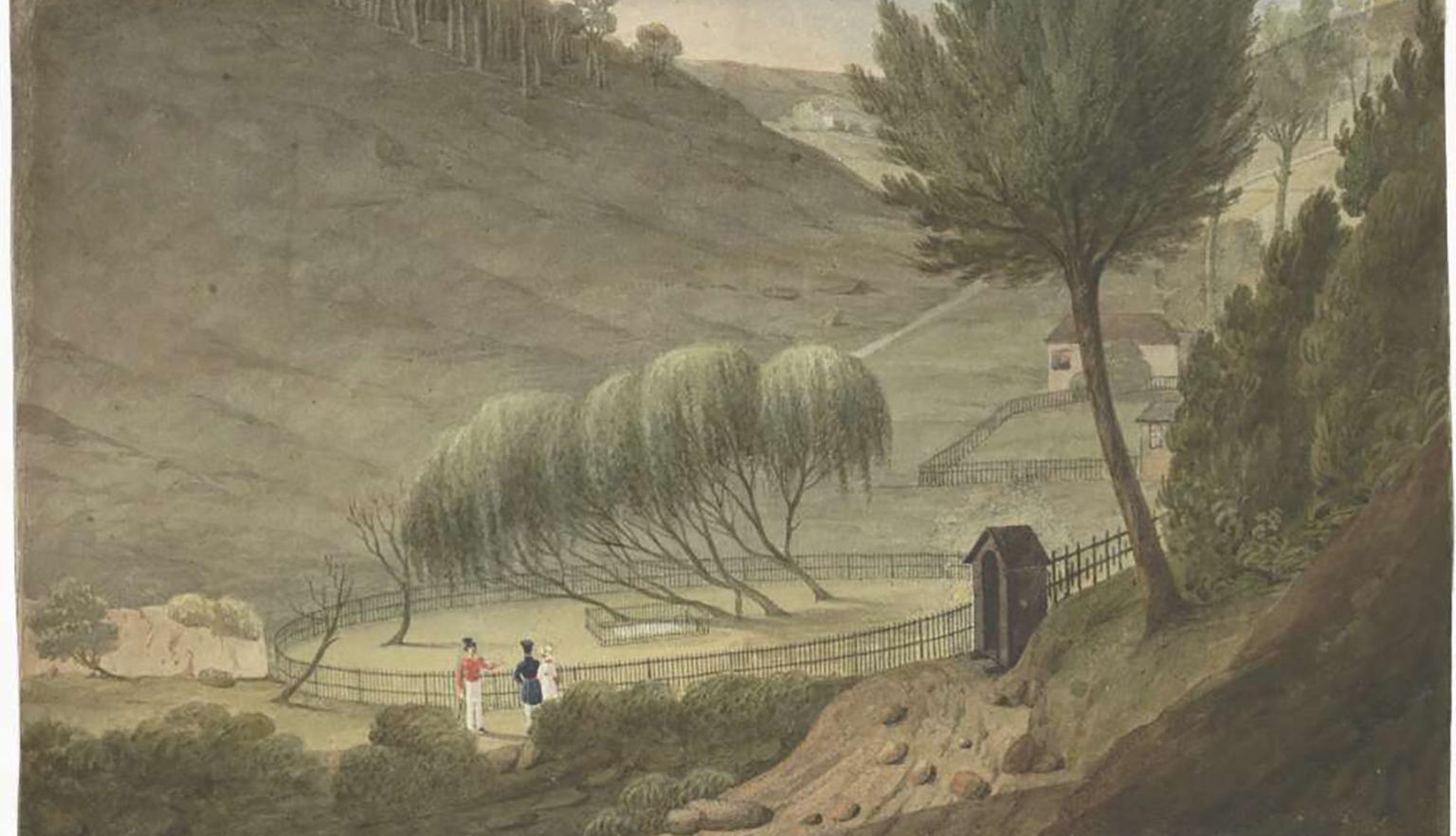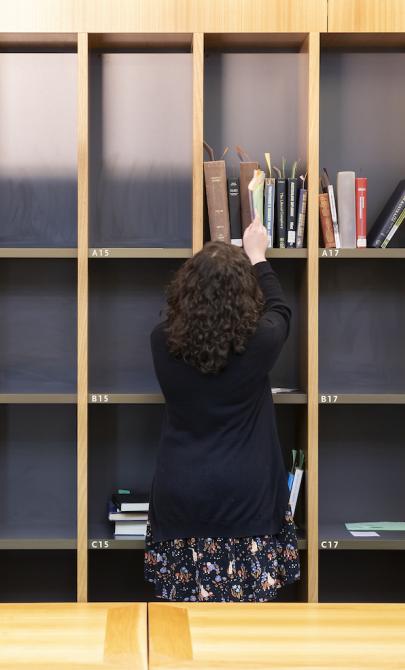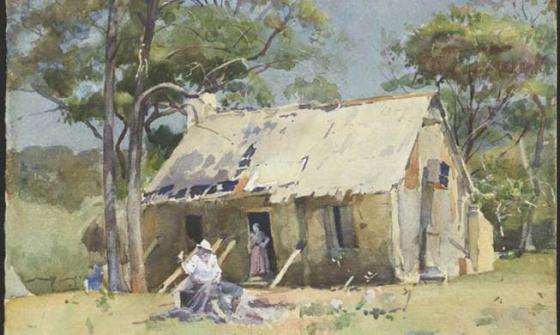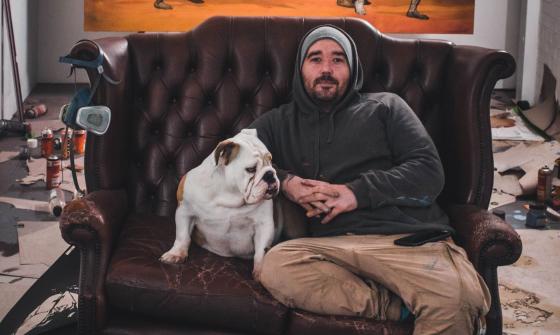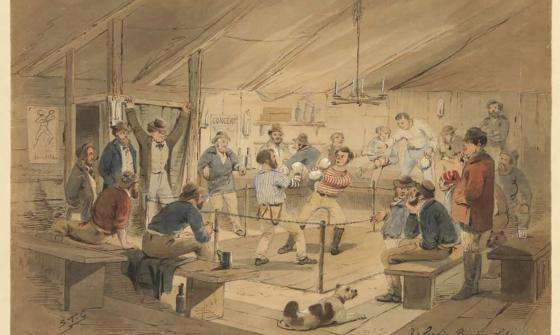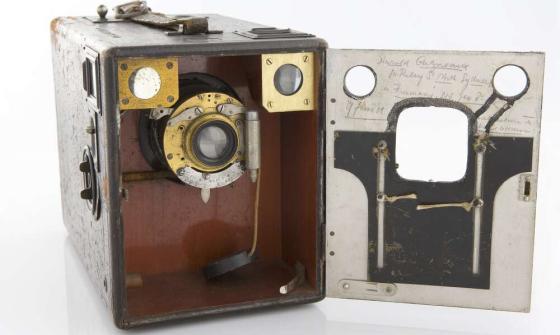Earle Collection
Collection highlights
Key items in the collection
This collection hosts a range of formats, including:
Augustus Earle's body of work offers a rich visual record of his travels between 1820 and 1838, capturing life in various parts of the world. His collection includes a diverse range of subjects, from landscapes and city views to portraits of Indigenous people and early European settlers.
Australian scenes and portraits
Earle’s Australian works include 50 pieces that vividly depict:
- Coastal views and landscapes from iconic locations such as Port Jackson, Point Piper, the Blue Mountains, and the cabbage tree forests of Illawarra.
- Colonial life, with detailed views of farms in New South Wales and Van Diemen’s Land (now Tasmania), as well as notable buildings like Government House in Sydney and institutions such as the Female Orphan School and the Female Penitentiary in Parramatta.
- Portraits of significant figures, including a well-known oil painting of Bungaree, an Aboriginal leader recognized by Governor Macquarie as ‘Chief of the Broken Bay Tribe,’ along with portraits of European settlers like Edward Smith Hall, editor of the Sydney Monitor.
- Scenes of Indigenous Australians, with numerous paintings and drawings of Aboriginal people and their environments.
New Zealand and Maori culture
Earle’s time in New Zealand is reflected in 38 artworks that explore:
- Maori culture, with powerful portrayals of chiefs, warriors, dancers, and traditional customs, including a burial ceremony and scenes of Maori people receiving tattoos.
- Village life, with depictions of houses and fortified villages, offering a window into everyday Maori life.
- Landscapes, including views of the Bay of Islands and missionary stations at Rangihoua and Keri-Keri.
Brazil and Tristan da Cunha
Earle also captured life in Brazil and Tristan da Cunha during his travels:
- Brazil (1820-23): His 21 Brazilian works feature scenes of Rio de Janeiro, the coronation of Don Pedro, cocoa and banana plantations, and vivid depictions of Negro slaves at work and being punished. Other pieces highlight local dances like the fandango.
- Tristan da Cunha (1824): Earle’s 15 works from his exile on the remote island showcase the rugged beauty of the island's coastal scenery and mountains, as well as a rare view of Government House.
Other locations and subjects
Earle’s artwork spans the globe, offering glimpses of:
- Shipboard life, with scenes of daily activities on the ships he travelled on.
- Penang and Malacca, captured during his time in Southeast Asia.
- Napoleon’s tomb, sketched during his visit to the island of St Helena.
- Literary scenes, with illustrations inspired by the novels of Tobias Smollett and Daniel Defoe.
Earle documented his travels and experiences in several important publications:
Engravings and lithographs
Many of Earle’s works were reproduced through engravings and lithographs. Notable examples include:
- Panoramas of Sydney and Hobart, based on Earle’s drawings and painted by Robert Burford.
- Views in Australia (1826), a rare collection of lithographs showcasing Earle’s Australian scenes, complete with an introduction and the bookplate of Sir Ralph Darling, then Governor of New South Wales.
About Augustus Earle
Augustus Earle (1793–1838) was a professional artist and traveller, known for his detailed depictions of the places and people he encountered. Born in London to an American artist, Earle may have studied painting at the Royal Academy. He spent much of his life traveling and documenting new lands, making him the first professional artist to work in Australia.
Early travels and adventures
Earle's early travels took him to various parts of the world:
- In 1815, he visited Sicily and Malta, sketching ancient ruins and Moorish structures.
- Between 1820 and 1823, he lived in Brazil and explored other parts of South America.
- In 1824, while on his way to India, his ship was caught in a storm, stranding him on the island of Tristan da Cunha for eight months. He was eventually rescued and brought to Hobart in 1825, before moving to Sydney later that year.
Time in Australia and New Zealand
Earle spent over three years in Australia, from 1825 to 1828, traveling widely across the country. He visited places like the Blue Mountains, Hunter River, and the Illawarra, painting landscapes, Aboriginal people, and colonial figures. During this time:
- He exhibited his work in Sydney and published Views in Australia in 1826.
- In 1827–1828, he spent several months in New Zealand, creating many of his well-known works depicting Maori culture and landscapes.
Later years and final travels
After leaving Sydney in late 1828, Earle continued to explore:
- He visited the Caroline Islands, Manila, Singapore, India, and Mauritius, before finally returning to London in 1830.
- In 1831, he joined HMS Beagle as the ship’s artist, where he became friends with Charles Darwin. Unfortunately, due to health issues, he had to leave the expedition at Montevideo in 1832, with Conrad Martens taking his place.
Earle’s artistic style and legacy
Earle was known for his romantic approach to nature, combined with a scientific interest in accurately depicting landscapes and people. His work stood out from that of his contemporaries, like Joseph Lycett, as he focused on capturing the unique features of Australian trees and landscapes. Earle’s portraits of Indigenous Australians often showed the negative impact of European settlement, while still portraying the strength and dignity of Aboriginal people.
Background to the collection
A watercolour view near Rio de Janeiro, attributed to artist Augustus Earle, was purchased by E.A. Petherick in 1887 and later acquired by the Library in 1909 as part of the Petherick Collection. Earle’s other works are part of the Nan Kivell Collection, which was deposited in the Library by Rex Nan Kivell in 1948 and formally acquired in 1959. These artworks originally belonged to Earle's half-brother, Admiral William Henry Smyth, and were sold at a Sotheby’s auction in 1926. They were later purchased by dealer Walter Spencer, who sold them to Nan Kivell.
The paintings, drawings, and prints of Augustus Earle are part of the Library's Pictures Collection, with each piece catalogued individually. Many of the original works, along with some prints, have been digitised for online access. Earle’s large oil painting, A Bivouac of Travellers in Australia, in a Cabbage-tree Forest, Day Break, is on long-term loan to the National Gallery of Australia.
- A bivouac of travellers in Australia in a cabbage-tree forest, day break
- The E.O. Racky [i.e. Horeke] or Deptford Dockyard, on the E.O. Keangha [i.e. Hokianga] River, N. Zealand
- A fortified island in E.O. Ke-Angha [i.e. Hokianga] River, New Zealand
- A bullock hackery or cow coach of India
- A view of Jamestown and Ladder Hill, St. Helena, 1829
- Distant view of Malacca, 1828
The Mitchell and Dixson libraries at the State Library of New South Wales house several of Augustus Earle's views of Sydney and Hobart, along with portraits of notable figures like Sir Thomas Brisbane and Captain John Piper.
The National Gallery of Australia holds his portraits of Richard Brooks and his wife, while the Alexander Turnbull Library in New Zealand holds a watercolour of Cower Cower River and two oil paintings of Maori subjects.
This guide was prepared using these references:
- Jocelyn Hackforth-Jones, Augustus Earle, Travel Artist: Paintings and Drawings in the Rex Nan Kivell Collection, National Library of Australia, Canberra, 1980.
- Patricia McDonald, The Wandering Artist: Augustus Earle's Travels Round the World, 1820-29, National Library of Australia, Canberra, 1996.
- Anthony Murray-Oliver, Augustus Earle in New Zealand, Whitcombe & Tombs, Christchurch, 1968.
- Bernard Smith, Augustus Earle (1793-1838), Australian Dictionary of Biography Online
- Bernard Smith, European Vision and the South Pacific, 1768-1850: A Study in the History of Art and Ideas, Clarendon Press, Oxford, 1960.
